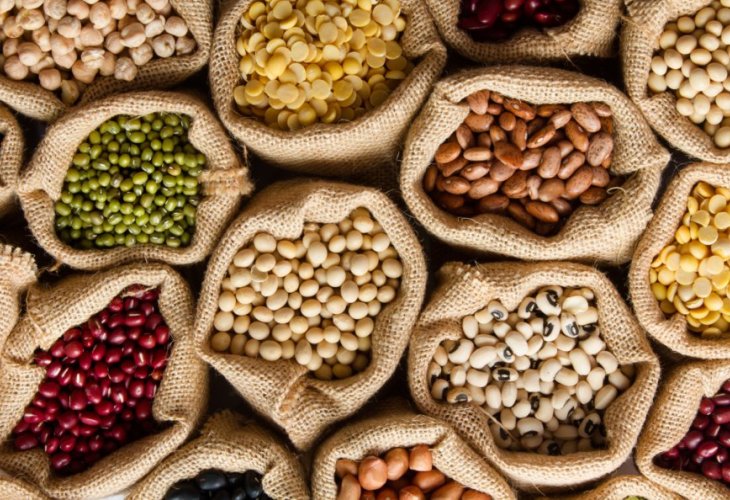Health and Mind
How to Eat Legumes the Healthiest Way
Tips for sprouting legumes, choosing the right grain, and preparing nutritious meals with ancient wisdom
 (Photo: shutterstock)
(Photo: shutterstock)How to sprout legumes? Which grain is preferable to consume? Here are some healthy usage tips.
Cooked and Sprouted Vegetables (When Cooked)
All vegetables that are cooked, as well as sprouted and cooked grains or legumes, take longer to digest and require more energy from the body. Cooking also reduces the natural quality and vitality of the food. That’s why it’s best to steam them lightly or cook them briefly just enough to soften the fibers without destroying their nutrients. The main reason for this is cellulose, a natural plant fiber that’s hard for the human body to digest. Once softened, the nutrients in these vegetables become more accessible and easier to absorb.
Legumes and Grains
Before cooking legumes or grains, it’s recommended to soak or sprout them. This shortens the cooking time and makes them much easier to digest. Many people experience gas or bloating from eating beans and lentils, and here’s why: the carbohydrates in legumes are stored as starch, large, complex molecules. These are difficult for our bodies to break down, especially because legumes also contain protein. Starch and protein each require different digestive enzymes. When we try to digest both together, it can cause a “digestive contradiction,” leading to fermentation, acidity, and gas.
By soaking or sprouting, we allow the starch to start breaking down into glucose, a simpler, more digestible form of sugar. This makes the food taste slightly sweeter and prevents digestive discomfort.
Sprouting also increases the amount of vitamin C and digestive enzymes in legumes, sometimes hundreds of times more than unsprouted seeds. And it’s easy and inexpensive to do this at home with mung beans, lentils, chickpeas, and others.
What About Bread?
Different types of bread fall into this group too but only when the grains used to make the bread (like wheat, rye, or spelt) have been sprouted first. Unfortunately, today’s bread is very different from the nourishing breads of earlier generations. Modern bakeries often use additives like dough improvers, preservatives, and industrial yeast that feed harmful fungi in the body like candida.
Most wheat today is genetically modified and contains a high amount of gluten, which can lead to health issues such as celiac disease and gluten sensitivity. That’s why, for a healthier and more traditional approach, it’s better to make simple, homemade bread using non-GMO spelt or rye flour, water, a bit of salt, and olive oil. Roll it out with a rolling pin and bake it on a hot pita pan. The result is a delicious, matzah-like Iraqi pita. You can also lightly fry the pitas in a pan using butter or a healthy cold-pressed oil.
Which Grain Is Best to Eat?
Barley is an excellent choice. It’s considered the healthiest of all grains, especially when used without yeast. Unlike other grains, barley doesn’t contain phytic acid, a substance that blocks the absorption of minerals. Most grains do have phytic acid, but it can be broken down by natural fermentation (using sourdough or yeast), which helps your body absorb the nutrients.
For a simple and nourishing meal, mix barley flour with a little salt and water to make a thin batter. Fry it lightly in a hot pan like pancakes. The taste is similar to traditional Yemeni lahoh.
More About Legumes and Sprouting
The healthiest way to eat legumes is when they’re fresh and still in their pods, or shortly after being removed. When legumes dry on the plant, their sugar content changes, and they develop protective acids that help them survive until the next rainy season—when they naturally sprout again. Unfortunately, when we eat dried legumes (even after cooking), we also take in these hard-to-digest sugars and acids, which is the main reason for gas and discomfort.
Sprouting is an ancient practice that improves nutrition and digestion. Our ancestors knew this well. In fact, sprouted legumes appear in recipes that go back over a thousand years. Sprouting is just one of many traditional food preparation techniques developed over generations to help the human body digest plant foods more easily.
Sprouted legumes don’t have to be cooked. You can eat them raw and fresh—especially lentils and mung beans. It’s simple to sprout legumes at home, and the process is the same for most types.
How to Sprout Legumes at Home
Soak the legumes in a bowl of water at room temperature for about 8 hours or overnight.
After soaking, strain the water. Keep the legumes in a strainer placed inside a bowl, and cover them.
Every few hours, rinse them under running water.
After about 24 to 48 hours of rinsing and draining, you’ll see tiny sprouts emerge. Once the sprouts are at least 1 cm long, they’re ready to eat.
Store your sprouts in a container in the refrigerator and eat them within 4 to 5 days.
If the legumes don’t sprout, they may have been roasted or irradiated (exposed to chemicals during storage), or they may simply be old and no longer viable. In that case, they’re not recommended for eating. Some legumes, like chickpeas, spoil easily in warm weather, so it’s best to sprout them in the refrigerator and keep a moist towel over them to prevent drying.
Split peas and red lentils sprout quickly and usually need only a few hours of soaking.

